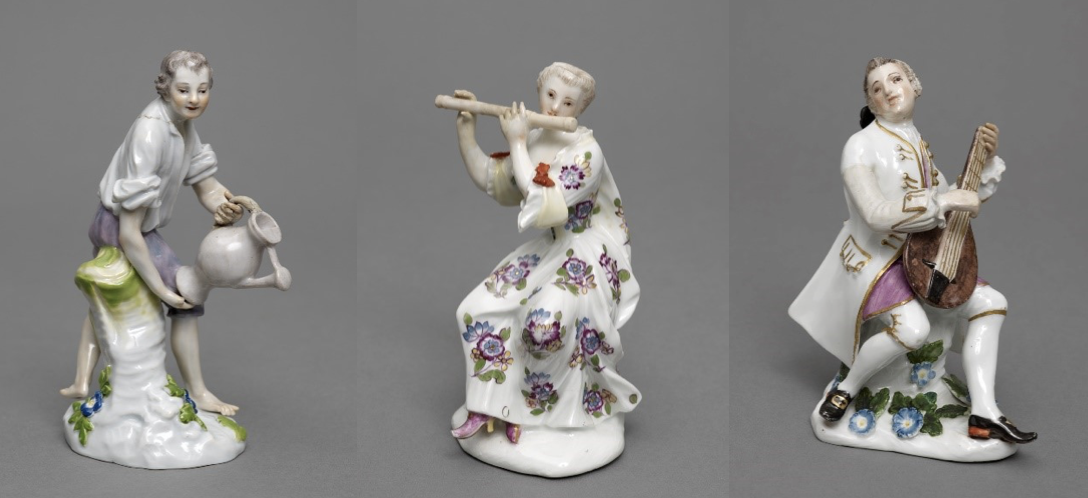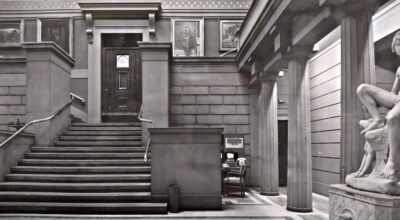The connection between Meissen porcelain and Bernardo Bellotto is Königstein fortress.
Frederick Augustus II (1696–1763), Elector of Saxony and King of Poland (as Augustus III) commissioned Bellotto to paint Königstein in 1756.
The previous elector, Frederick Augustus’s father, known as Augustus the Strong, had on staff an alchemist, Johann Friedrich Böttger (1682-1719). Böttger’s progress at turning base metal into gold was slow. In 1706, to focus his mind, Augustus locked him up in Königstein with scientist Ehrenfried Walther von Tschirnhaus (1651-1708). Tschirnhaus had a different project in hand: to crack the formula for making porcelain. Rich and royal Europeans had been hankering after this precious Chinese ceramic for centuries. Its extreme hardness made delicate, near-transparent creations possible.
Imprisonment was effective: Böttger and Tschirnhaus found the formula in 1708 – kaolin clay, alabaster, China stone and quartz, heated to 1300 degrees centigrade. After Tschirnhaus died, Böttger took all the credit. He became the first director of the Meissen porcelain manufactory in 1710.
Der Zivilist collective have identified Meissen porcelain in the gallery collection to display. Their selections present another way to interweave the stories of the fortress, Bellotto, Meissen, and, now, Manchester.




